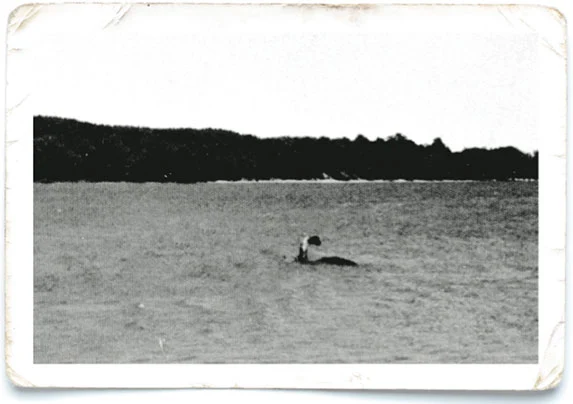
I’m being held captive, on memory lane. It’s a sweet captivity, in many ways, the bonds of fond reminiscences, but I’m shackled nonetheless.
Like so many of you, I am in spring-cleaning mode. I look around my house and I desperately want to simplify and streamline. I yearn for clean surfaces and for a-place-for-everything-and-everything-in-its-place.
But I am not temperamentally suited to it. So incredibly not suited . . .
This house is packed to the rafters with stuff. There’s the stuff for all the things my husband and I make—the weaving stuff, the lapidary stuff, the metalsmithing stuff, the quilting and cross stitch and candymaking stuff. Oh, and the vintage linen stuff. Let’s not forget that.
But at least those things have something of a purpose, good reasons to be here. They entertain us and allow us to be productive and make pretty things.
The other stuff is more problematic. It’s the stuff of sentimentality, of nostalgia, of family.
So much of what is here is laden with meaning for me and for my husband.
That table and chairs came from his grandparents. This table and chairs was my grandparents’, purchased when they first set up housekeeping 85 years ago.
The clock case my husband’s father made, the cases of specimens my grandfather collected as a rock hound, the sweaters my mother knit, et cetera, et cetera, et cetera.
Some of the things we have have extrinsic value—I have my grandmother’s sterling silver flatware, a setting for twelve. Very nice, but we don’t use it, our lifestyle doesn’t call for it, so it sits and tarnishes and waits to be passed down.
Most of what we’re talking about here has only intrinsic value, it is special only because it’s special to us. A perfect example is a little wood and metal lantern we picked up in the middle of nowhere in Ireland on our honeymoon. Probably made by Travelers, just a piece of junk, but it’s our junk, from our honeymoon.
Lots of little things take up space, like a china rose bowl my grandmother loved, an aluminum measuring cup, full of dents, that came from the other grandmother’s kitchen. Three doll-size chests, made by one or another man in the family for one or another child. It goes on and on.
And it’s not all special because it’s old and handed down. I have a bust of Aristotle that serves no purpose except looking wise and collecting dust. But, see, it isn’t just a bust of Aristotle. It’s the bust of Aristotle that my sister carried back from Greece, on her lap so it wouldn’t break, to give me because I was finally completing my doctorate in . . . wait for it . . . rhetoric. See? It’s a special, special bust of Aristotle.
My grandparents’ bed is emblematic of the struggle I’m having. It’s an oak bed, carved wood, pretty ornate but nothing special; it was probably inexpensive when they bought it. I figure my father was conceived in this bed and I slept in it, with my grandmother, when I was a little girl staying overnight at the farmhouse.
I’ve always known this bed.
The bed moved with me from the farm to grad school in Pennsylvania and then to Buffalo.
In spite of being a three-quarter bed—only about 48 inches wide—my husband and I slept in this bed, with multiple cats, for the first 15 years we were married. It was cozy, to say the least. Eventually, it was moved to the guest room. When we retired and came here, back here near the farm where it originally stood, the bed came along.
It’s big. It’s awkward. It’s not comfortable for sleeping.
Like so many other things we own, it has got to go.
I look around me—Don gave me that decorative box when we were dating. We got that blanket on our honeymoon. My students gave me this desk plaque when I finished my Ph. D. Nice memories of wonderful times, but the things aren’t the memories and I’m drowning in things.
For heaven’s sake! Why do I keep this stuff?! What am I afraid of? That if I throw away the tag from my first cat’s collar, even though she died 15 years ago, that I’ll forget the cat?
Or that, if I sell my grandmother’s bed, I’m somehow betraying her and forgetting where I came from?
Intellectually, I know that’s ridiculous. If you came to me with a similar dilemma, I could coolly and calmly explain to you why you should divest yourself of the weight of the past. I’d say, “Take some photos of these sentimental things, keep the photos, sell the things, and use the money to go on a nice trip and make new memories.”
I’d say, “They’re only things.”
See how smart I can be when I’m being logical? If only logic ruled . . .
I am making progress—some sentimental possessions have been pressed into practical service so I can justify having them, because they’re earning their keep. One handmade doll’s chest holds spices in the kitchen, another holds office supplies and stamps. An antique knife box corrals dishtowels, and so on.
But, as of two days ago, the bed is in the garage. A yard sale looms and there’s always Craigslist. Maybe some young couple will see the value in a cozy bed with history on its side. My husband and I are being pretty ruthless and are getting rid of things we couldn’t’ve 5 years ago.
We’ll still have plenty of things left to sustain our memories of people and places, but we won’t have ALL of the things.
We’ve allowed ourselves to be hostages to sentimentality for a long time, and we’re ready to pay the ransom. The ransom will have its cost—some pangs, a tear or two, maybe even some regret down the road—but freedom always has its cost.







































